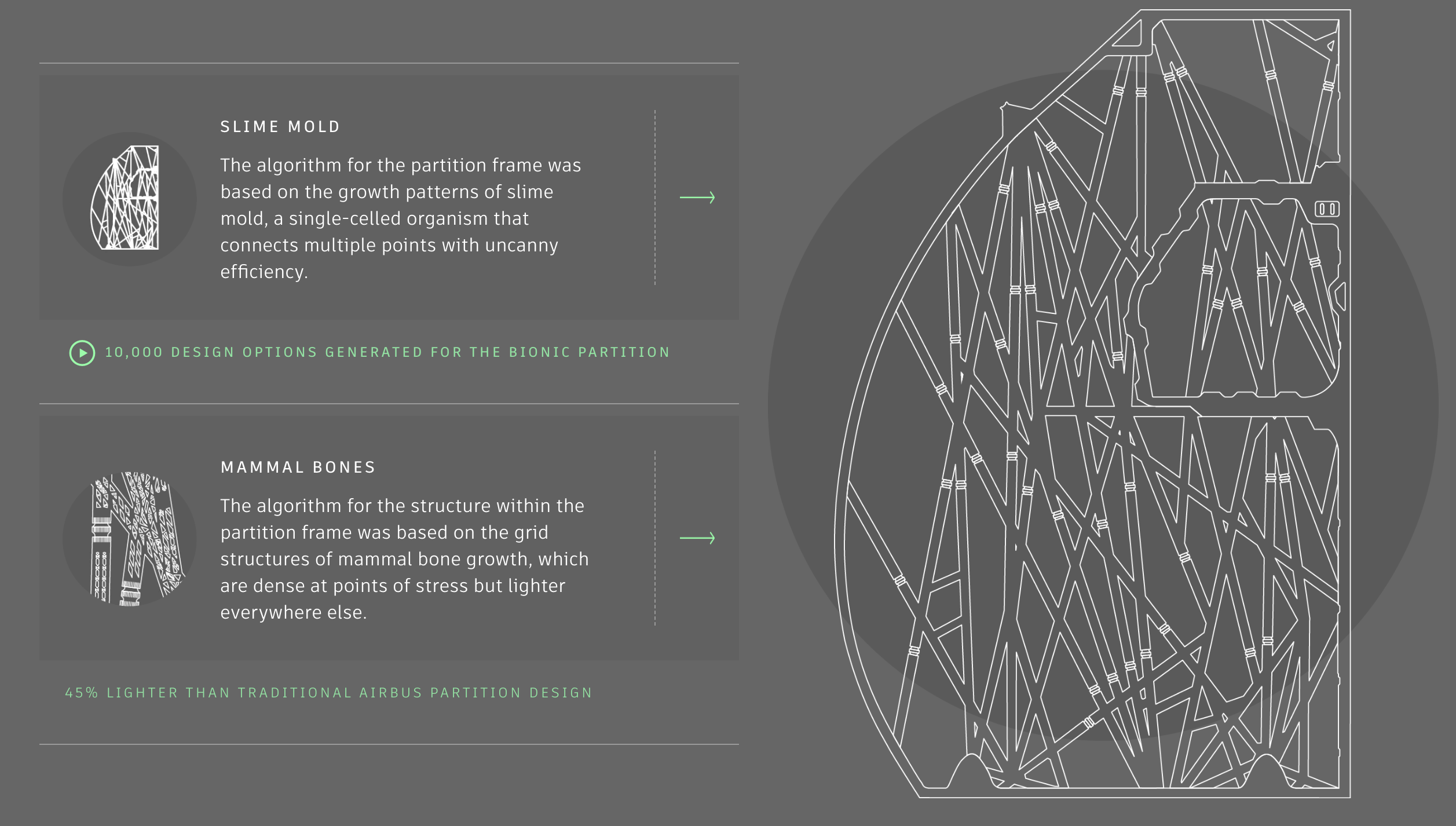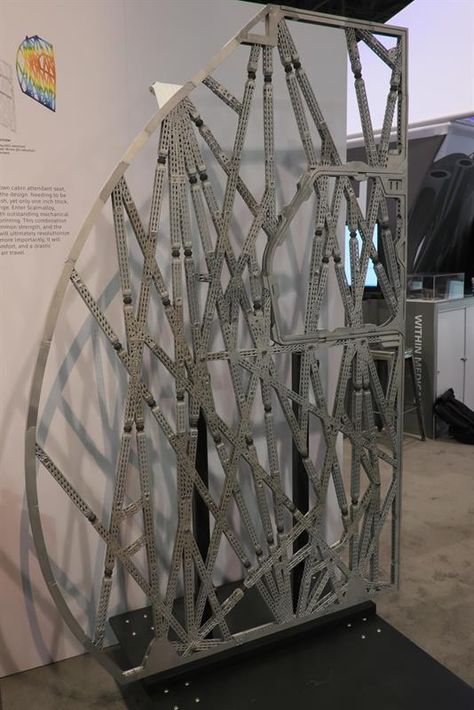About seven years ago, 3D printing was all the rage. For a few months, even years, it was one of the most discussed technologies on the market, with the potential to truly revolutionize how we manufacture.
While 3D printing disappeared from the limelight, it quietly made major strides in sustainability, healthcare and architecture. In fact, over the years, 3D printing has been used to print organs, homes, and even entire coral reefs.
While users' understanding of the technology evolved, a new use case—generative design—emerged. This is perhaps the most transformative piece of design technology since the introduction of 3D printing itself.
What is generative design?
Generative design is a tool that produces countless design variations based on specified design parameters. Design iterations can be based around performance, spatial requirements, materials, manufacturing methods, and cost constraints.
Generative design solutions create designs that would otherwise be impossible using traditional manufacturing methods. This technology uses cloud computing and additive manufacturing (3D printing) methods to cycle through thousands of designs.
Additionally, generative design incorporates machine learning to understand more about the design after each iteration and figure out what works—and what doesn’t. This process results in incredibly imaginative designs typically out of the realm of human creativity. Not to mention, it can do this at an accelerated rate.
While generative design greatly benefits engineers that would like to save time, it also impacts sustainability in manufacturing in a variety of ways.
For the third column in The G2 on Sustainable Design series, I’ll continue focusing on sustainability and software by discussing various ways generative design has impacted—and will continue to impact—the future of sustainability in manufacturing and design.
From creating new rear wing systems for cars, to creating entirely unimaginable partitions for airplanes, the future of generative is exciting and truly revolutionary.
Generative design and sustainability
Generative design aids sustainability in two major ways:
-
- Generative design uses less raw material
- Generative design uses less energy with additive manufacturing
Generative design technology enables users to input a variety of design parameters, including the amount of raw material used. Engineers previously thought a design needed more raw material, now generative design can reduce the amount by up to 40%.
Claudius Peters, a 113-year-old manufacturer of pneumatic conveyors, silos, and clinker coolers, recently took advantage of generative design to reduce the company's material use. After evaluating various design iterations, the company decided to optimize a clinker cooler, a massive machine that cools molten rock from 1400°C to 100°C (2550°F to 212°F).
The team at Claudius Peters inputted parameters, and generative design technology produced completely unique iterations of the clinker cooler. The result? A new design that was 30–40% lighter and used 25% less material. Generative design effectively created a digital transformation for a 100 year old company that understood the importance of adopting new technologies. As with all industries, the latest technology and software allowed them to stay competitive by altering the way they conceive designs.
 Source: Autodesk
Source: Autodesk
Since the clinker cooler’s overall weight and material were reduced, the company could change where it manufactured the part, further impacting its sustainability.
In addition to raw material reduction, generative design can improve sustainability through additive manufacturing, also known as 3D printing.
Bugatti Automobiles recently combined 3D printing and generative design to innovate a wing control system for the 1,500 PS Chiron sports car. By using NX and Simcenter, two product and machine design solutions that have generative design capabilities, Bugatti created a new lightweight design for its wing control system.
 Source: Bugatti
Source: Bugatti
The new design generated by the software replaced originally metallic parts with carbon fibre. 3D printing was used to print the rear wing system with carbon fibre for the two guiding tubes and the rear coupling rod.
With this key adjustment, the amount of raw materials used in production of the rear wing system will be much less. As a result, the manufacturing process will use less raw materials and be more sustainable.
3D printing is a more sustainable method than regular manufacturing since it only uses the exact amount of material necessary to produce a part.
The future of generative design
While it's clear that generative design has already made its mark on sustainable manufacturing, it’s really just getting started. Many businesses in the manufacturing industry are currently exploring generative design as a tool to work toward more affordable and sustainable manufacturing methods.
One company exploring future use cases for generative design is European aerospace corporation Airbus. In a case study with Autodesk, Airbus used generative design to create a new partition that separates the passenger compartment from the galley in the Airbus A320 cabin. The goal was to make the new partition lighter, no more than an inch thick, and strong enough to anchor two jump seats for flight attendants.
Of course, this was no easy task. Airbus used design parameters literally and figuratively outside the normal mold. The result was a hybrid design based on two growth patterns found in nature: slime mold and mammal bones.
 Source: Autodesk
Source: Autodesk
To make the actual partition, the team used 3D printing to produce 100 separate pieces; combined together, these pieces created one large partition. They nicknamed it “the bionic partition.”
Once Airbus completed the bionic partition, the team calculated the amount of fuel saved from the new partition. For every 1 kilogram (2.2 pounds) reduction in weight, 106 kilograms (233.2 pounds) of jet fuel is saved a year, decreasing the carbon footprint of air travel. Each partition is approximately 30 kilograms (66 pounds) lighter than the standard partition. Furthermore, if the bionic partition were installed throughout the entire cabin, 1,100 pounds of weight would be removed. The decrease in fuel would cut CO2 emissions by 166 metric tons per aircraft per year. That’s roughly 366,000 pounds in volume, or roughly 900 times as big as a bathtub. Finally, 3D printing the partition uses only 5% of the raw material as opposed to the traditional process of milling parts down from a metal block. This also cuts emissions and forges a more sustainable manufacturing method.

Source: Autodesk
While it seems like the tools used to make the bionic partition are quite advanced, many of the tools already exist on G2 across our computer-aided engineering, 3D printing, and product and machine design software categories. As such, a future filled with sustainable manufacturing suddenly doesn't seem so far out of reach.
With the global generative design market set to grow from $111 million in 2018 to $275 million by 2023, we expect more initiatives and generative design technology to emerge in the market. This technology can help designers focus on innovative ways to engineer, while simultaneously forging a more sustainable world.
Vous voulez en savoir plus sur Logiciel de CAO polyvalent ? Découvrez les produits CAO à usage général.

Michael Gigante
Mike is a former market research analyst focusing on CAD, PLM, and supply chain software. Since joining G2 in October 2018, Mike has grounded his work in the industrial and architectural design space by gaining market knowledge in building information modeling, computer-aided engineering and manufacturing, and product and machine design. Mike leverages his knowledge of the CAD market to accurately represent the space for buyers, build out new software categories on G2, and provide consumers with data-driven content and research. Mike is a Chicago native. In his spare time he enjoys going to improv shows, watching sports, and reading Wikipedia pages on virtually any subject.
